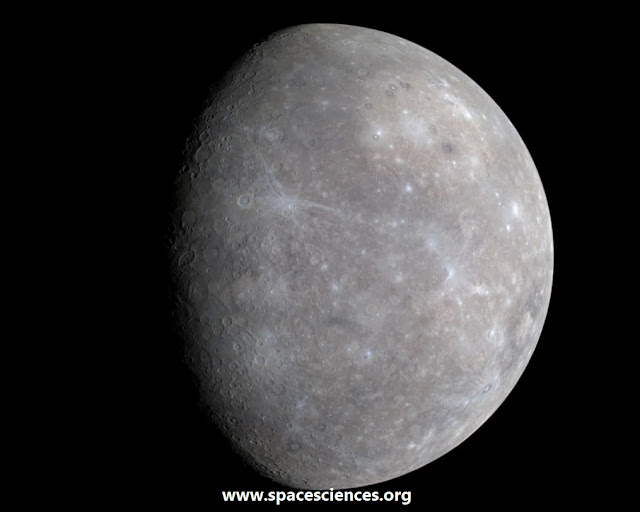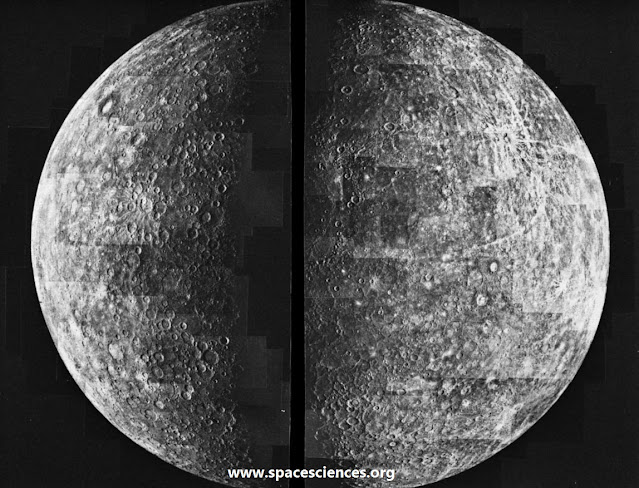Mercury: The Smallest and Closest Planet to the Sun
Mercury is the smallest and closest planet to the Sun. It is a rocky planet with a thin atmosphere and a heavily cratered surface. Mercury is also the fastest planet in our solar system, orbiting the Sun every 88 Earth days.
Mercury is a challenging planet to study because of its proximity to the Sun. The Sun's intense heat and radiation make it difficult for spacecraft to operate near Mercury. However, in recent years, scientists have learned a great deal about Mercury thanks to missions such as Mariner 10 and MESSENGER.
In this blog post, we will explore everything you need to know about Mercury, including its physical characteristics, its atmosphere, its magnetic field, and its exploration history. We will also discuss some of the most interesting mysteries surrounding this fascinating planet.
Mercury's Physical Characteristics
Mercury is a small planet, with a diameter of just 3,031 miles (4,880 km). This makes it about a third the size of Earth. Mercury's mass is also about a third that of Earth.
Mercury's surface is heavily cratered, similar to the Moon. This is because Mercury has been bombarded by meteors and asteroids for billions of years. Mercury's largest crater is the Caloris Basin, which is about 960 miles (1,540 km) wide.
Mercury has a very thin atmosphere, composed mostly of helium, hydrogen, and oxygen. The atmosphere is so thin that it is difficult to detect from Earth.
Mercury's Atmosphere
Mercury's atmosphere is very thin, composed mostly of helium, hydrogen, and oxygen. The atmosphere is so thin that it is difficult to detect from Earth.
The thin atmosphere on Mercury is thought to be created by the solar wind, which is a stream of charged particles that flows from the Sun. The solar wind strips away Mercury's atmosphere, but the planet's gravity is strong enough to hold onto some of the particles.
Mercury's Magnetic Field
Mercury has a weak magnetic field, which is about 1% the strength of Earth's magnetic field. The magnetic field is thought to be generated by a liquid iron core inside Mercury.
Mercury's magnetic field is not strong enough to protect the planet from the solar wind. However, it does help to deflect some of the charged particles from the solar wind, which reduces the amount of erosion on Mercury's surface.
Mercury's Exploration History
The first spacecraft to visit Mercury was Mariner 10, which flew by the planet three times in the early 1970s. Mariner 10 took the first close-up photos of Mercury's surface and revealed the planet's heavily cratered landscape.
The second spacecraft to visit Mercury was MESSENGER, which orbited the planet from 2011 to 2015. MESSENGER took the most detailed photos of Mercury's surface ever taken and revealed new information about the planet's geology, atmosphere, and magnetic field.
Mercury's Geology
Mercury's surface is divided into two main regions: the northern lowlands and the southern highlands. The northern lowlands are thought to have been formed by a giant impact early in Mercury's history. The southern highlands are older and more heavily cratered.
Mercury's surface also features a number of other geological features, including valleys, cliffs, and ridges. Some of these features are thought to have been formed by tectonic activity, while others are thought to have been caused by impacts from meteors and asteroids.
Mercury's Interior
Mercury is thought to have a layered interior, with a dense iron core surrounded by a mantle and a crust. The iron core is thought to make up about 70% of Mercury's mass.
The mantle is thought to be composed of silicate rocks, and the crust is thought to be composed of a variety of rocks, including basalt, andesite, and rhyolite.
Mercury's Water
Scientists believe that Mercury may have water ice at its poles. The water ice is thought to be located in craters that are permanently shadowed from the Sun.
The water ice on Mercury is thought to have originated from comets and asteroids that have impacted the planet. The water ice is also thought to be protected from the Sun's radiation by the craters in which it is located.
Mercury's Future
Mercury is a fascinating planet with a lot to offer scientists. Future missions to Mercury could help to answer some of the mysteries surrounding the planet, such as how it formed and whether there is water ice on its poles.
Mysteries of Mercury
Despite all of the progress that has been made in studying Mercury, there are still many mysteries surrounding this fascinating planet. Some of the most intriguing mysteries include:
How did Mercury form so close to the Sun?
Why does Mercury have a liquid iron core?
What is Mercury's magnetic field doing?
Is there water ice on Mercury's poles?
Other Blogs about Mercury
Here are some other blogs about Mercury that you may find interesting:
Mercury: A Planet of Extremes
Mercury's Mysteries: What We Know and Don't Know
Mercury's Exploration History
Mercury's Surface: A Close-Up Look
Mercury's Atmosphere: Thin but Important






0 Comments
Please don't enter any spam link in the comment box.